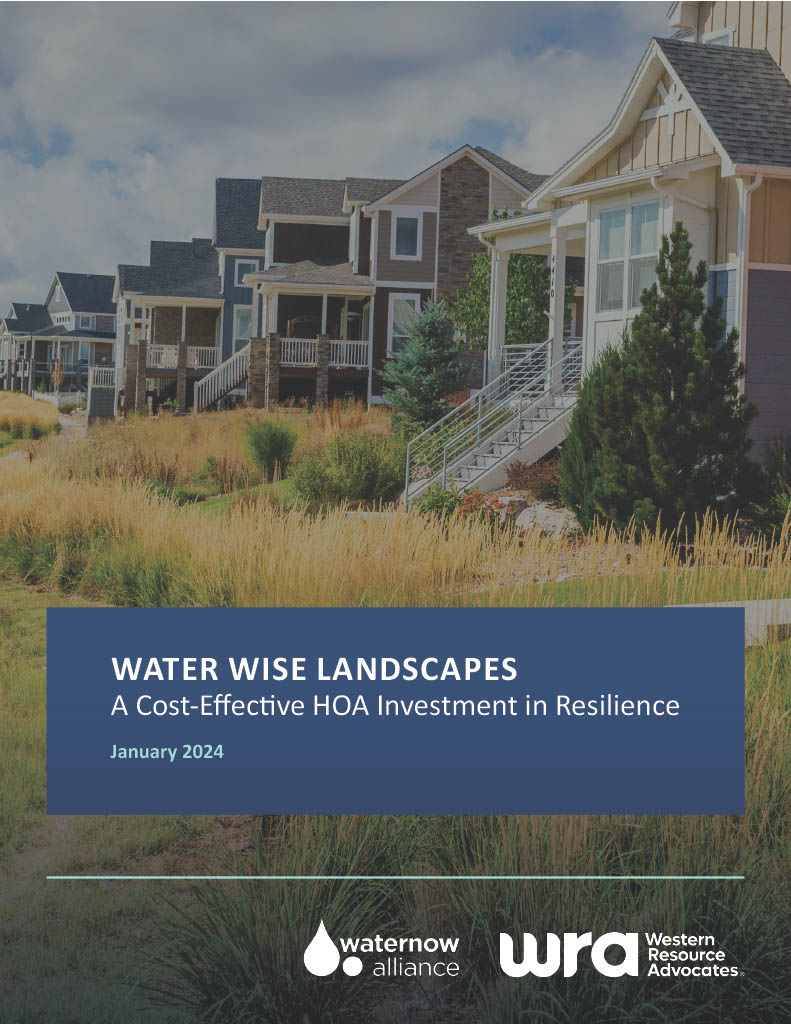Roughly 40-50% of all municipal water used in Colorado is applied outdoors, with much of this going to irrigate thirsty turfgrass. Non-native turfgrass requires extensive, and increasingly expensive, irrigation to stay green in the dry Colorado summer. As drought and rising temperatures strain Colorado’s water supplies, communities across the state are transitioning to water wise landscaping to save both water and money.
Homeowners Associations (HOAs) have an important role to play in this transition. In Colorado, 60% of homeowners live in HOA communities. Many HOAs maintain irrigated turfgrass in medians, entryways, and common spaces that are unused by the community. Converting this non-functional turf to water wise landscaping can benefit HOAs in numerous ways, including by saving water, raising property values, lowering maintenance costs, and increasing drought resilience.
In this report, we outline strategies to help Colorado HOAs leverage funding and financing opportunities to pay for turf conversion and maximize the return on their investment. We provide four case studies to demonstrate how other HOAs in Colorado have successfully implemented and benefitted from turf conversion projects.


